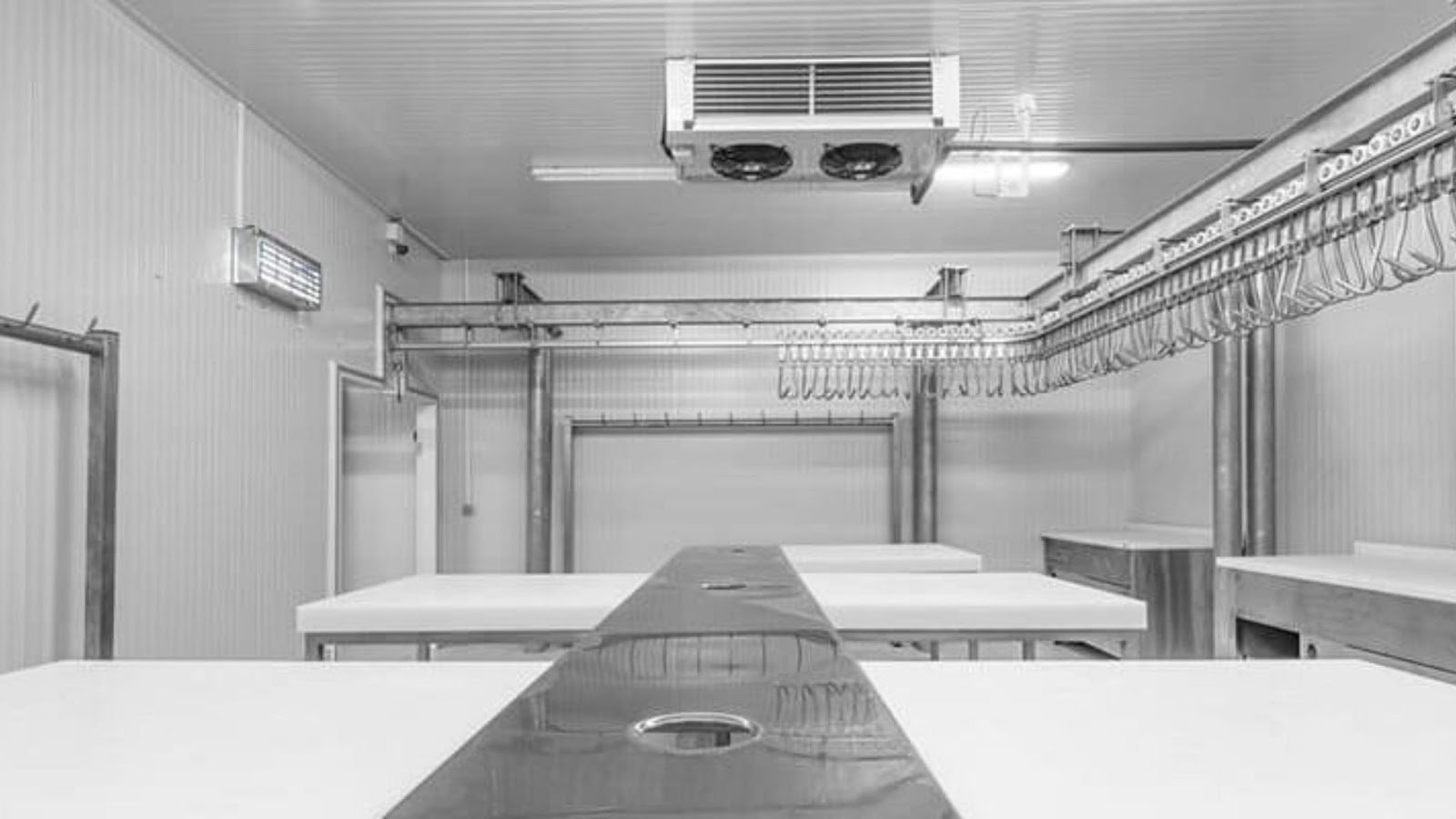When it comes to keeping your walk-in freezer running, the refrigerant inside does more than just keep things cold; it also affects the planet. Many older refrigerants hurt the environment by harming the ozone layer or making climate change worse. That’s why more people are switching to eco-friendly choices that are safer for the earth.
You don’t need to be a scientist to make a smart choice. In this guide, we’ll break things down simply. You’ll learn how to spot the best green refrigerants, understand why they matter, and feel confident choosing one that fits your freezer and your values. Let’s make your cold storage cool and kind to the planet.
Why Choosing the Right Refrigerant Matters
Choosing the right refrigerant for your walk in freezer is more important than you might think. The refrigerant not only keeps your freezer cold but also has a big impact on the environment. Using the wrong type can harm the planet and even cause problems for your freezer’s efficiency.
How Refrigerants Affect the Environment
Refrigerants are chemicals that absorb heat to cool your freezer. Some older types of refrigerants can escape into the air and damage the ozone layer, which protects us from harmful sun rays. Others contribute to global warming by trapping heat in the atmosphere. When harmful refrigerants leak, they can make climate change worse and hurt the Earth’s balance.
Why It’s Important to Use Eco-Friendly Refrigerants
Eco-friendly refrigerants are designed to reduce environmental damage. They have low “global warming potential,” which means they don’t trap as much heat if they leak. They also don’t harm the ozone layer. Choosing these refrigerants helps protect the planet while keeping your freezer running smoothly.
Legal Rules and Regulations
Because of their impact, many countries have laws about which refrigerants can be used. These rules encourage businesses and homeowners to switch to safer, eco-friendly options. Using the right refrigerant ensures you follow the law and avoid fines or other penalties.
Benefits for Your Freezer and Your Wallet
Using the right refrigerant can also help your freezer work better and use less energy. This means lower electric bills and less wear and tear on your equipment. So, by picking the right refrigerant, you save money and help the environment at the same time.
What Makes a Refrigerant Eco-Friendly?
When thinking about how to select environmentally friendly refrigerants for walk-in freezers, it’s important to understand what makes a refrigerant truly eco-friendly. Not all refrigerants are created equal, and some are much better for the environment than others. In the context of cool rooms, choosing the right refrigerant can significantly reduce your environmental impact while maintaining efficient performance. Let’s break down the key features that define an eco-friendly refrigerant.
Low Global Warming Potential (GWP)
One of the biggest things to look for in a refrigerant is its Global Warming Potential, or GWP. This number tells us how much heat a refrigerant traps in the atmosphere compared to carbon dioxide. The lower the GWP, the less harm it does to the climate. Eco-friendly refrigerants have a low GWP, meaning if they leak, they won’t add much to global warming.
No Harm to the Ozone Layer
Another important factor is whether the refrigerant harms the ozone layer. The ozone layer protects life on Earth by blocking dangerous ultraviolet rays from the sun. Some older refrigerants contain chemicals called chlorofluorocarbons (CFCs) or hydrochlorofluorocarbons (HCFCs) that damage this layer. Eco-friendly refrigerants avoid these chemicals and keep the ozone layer safe.
Safe for Use and Easy to Handle
Eco-friendly refrigerants are also safer for people to use. They should have low toxicity and not be highly flammable, so they don’t pose extra risks in case of leaks. This means they are easier to store, transport, and maintain in your walk-in freezer without worry.
Certified and Approved Options
Many eco-friendly refrigerants come with certifications or approvals from environmental and safety organizations. These labels show that the refrigerant meets strict standards for being green and safe. Choosing certified refrigerants helps you feel confident that you’re making a smart choice.
Top Green Refrigerant Options for Walk-in Freezers
When it comes to choosing environmentally friendly refrigerants for walk-in freezers, knowing the best options available can make your decision much easier. Several green refrigerants are now popular because they are safer for the planet while still keeping your freezer cold and efficient.
Natural Refrigerants: The Greenest Choice
Natural refrigerants like carbon dioxide (CO₂), ammonia, and hydrocarbons are among the most eco-friendly options. Carbon dioxide is non-toxic, non-flammable, and has a very low global warming potential. It works well in colder climates and is great for large commercial freezers. Ammonia is also very efficient and has zero impact on the ozone layer, but it must be handled carefully because it can be toxic in high amounts. Hydrocarbons, like propane, are natural and have low environmental impact, but they are flammable, so safety measures are important.
Low GWP Synthetic Refrigerants
Besides natural options, there are synthetic refrigerants developed to reduce environmental harm. These include types like HFOs (hydrofluoroolefins), which have much lower global warming potential compared to older refrigerants like R-22 or R-134a. These newer synthetic refrigerants are safer for the ozone layer and can be a good choice if natural refrigerants don’t fit your system.
Matching Refrigerants to Your Needs
Each green refrigerant has strengths and weaknesses depending on your freezer’s size, temperature needs, and location. For example, CO₂ works well in colder places, while some synthetic options may be better in warmer climates. It’s important to pick a refrigerant that fits your specific situation to get the best results.
Balancing Safety, Cost, and Environment
While natural refrigerants are often the best for the environment, they sometimes require special equipment or safety steps, which can affect cost. Synthetic low-GWP refrigerants may be easier to install but could be slightly more expensive. Finding the right balance between safety, cost, and green benefits will help you make the best choice for your walk-in freezer.
How to Choose the Right One for Your Freezer
Picking the right environmentally friendly refrigerant for your walk-in freezer isn’t just about finding the greenest option—it’s about finding the best fit for your specific needs. Here’s how to make a smart choice that works for your freezer and the planet.
Consider Your Freezer Size and Use
First, think about the size of your walk-in freezer and how you use it. Larger freezers may need refrigerants that can handle bigger cooling loads, while smaller units might do well with simpler options. Also, consider how often the freezer is opened or if it runs continuously.
Different refrigerants perform better under different conditions, so matching the refrigerant to your freezer’s needs is key.
Look at Climate and Location
Where your freezer is located matters too. Some refrigerants work better in colder climates, while others are designed to perform efficiently in warmer environments. Choosing a refrigerant suited to your climate helps your freezer run smoothly and saves energy.
Balance Cost and Long-Term Savings
Eco-friendly refrigerants sometimes cost more upfront, especially if new equipment or safety features are needed. But remember, they can lower your energy bills and reduce maintenance costs over time. Think of it as an investment that pays off both financially and environmentally.
Get Professional Advice
Finally, don’t hesitate to consult a certified refrigeration technician or expert. They can assess your specific situation, recommend the best refrigerant, and ensure the installation meets safety and environmental standards. Their guidance can save you time, money, and headaches down the road.
Conclusion
Choosing an eco-friendly refrigerant is a smart move for your freezer and the planet. It saves energy, follows the rules, and keeps your food cold the green way. With the right information, you can make a safe, smart choice that helps the earth; long into the future.
YOU MAY ALSO LIKE: Do You Need a High-Capacity Power Bank?











